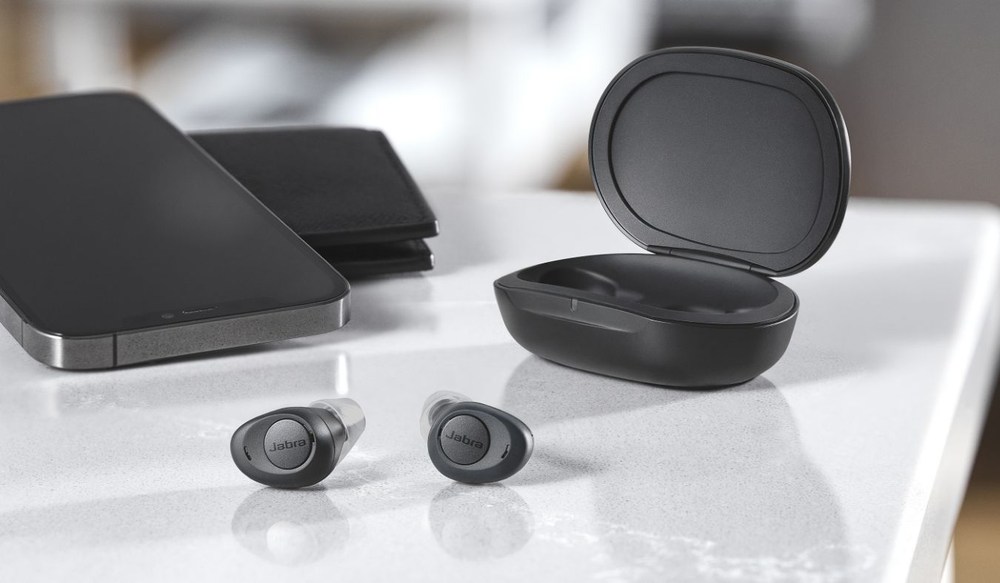Tips for Managing Hearing Aids During Fall Activities
Fall brings plenty of reasons to spend time outside, from weekend hikes to

By: admin | April 30, 2024
Hearing loss is often assumed to affect both ears equally. But, did you know that some people experience hearing loss in just one ear? This is known as unilateral hearing loss and it can be both puzzling and challenging, leaving you wondering why you’re only dealing with half the problem.
Imagine this: You’re in a busy coffee shop trying to have a conversation. Amidst all the background noise and chatter, you’re struggling to understand what your friend is saying because your left ear isn’t picking up the sound like your right one does. This isn’t a rare scenario for those dealing with unilateral hearing loss. The reasons behind this selective hearing loss are varied and complex – ranging from simple wax build-up to more serious issues like Meniere’s disease or acoustic neuroma. By understanding why this happens, you can take steps towards managing your symptoms and improving your quality of life.
Hearing loss in one ear, also referred to as unilateral hearing loss, occurs when an individual experiences a significant decrease in hearing sensitivity in one ear while maintaining normal or near-normal hearing in the other ear. This condition can manifest due to various factors affecting the auditory system, including issues with the outer, middle or inner ear, as well as the auditory nerve pathways leading to the brain.
Individuals with hearing loss in one ear may experience challenges in various auditory tasks, like localizing sounds in space, understanding speech in noisy environments and participating in conversations where the speaker is positioned on the affected side. Additionally, they may encounter difficulties with balance, spatial awareness and safety, particularly in situations where auditory cues play a crucial role in orientation and navigation.
Our hearing process is quite complex and impressive. It begins with sound waves entering the ear canal, where they’re transformed into vibrations by the eardrum. These vibrations then travel to the middle ear, which houses three tiny bones – the malleus, incus and stapes. Working together, these bones amplify the vibrations and send them on their way to the inner ear.
The inner ear houses a snail-shaped structure called the cochlea. This fluid-filled organ is lined with thousands of tiny hair cells that move in response to the vibrations they receive. As these hair cells sway, they generate electrical signals that are sent via auditory nerves directly to your brain. It’s here that these signals are interpreted as sound – allowing you to understand and respond to what you’re hearing.
Understanding this process can help you appreciate how delicate our hearing system is and why it’s so important to protect it. Regular check-ups with a hearing specialist can help maintain your hearing health and detect any potential issues early on. Remember: taking care of your ears today can ensure a world of clear sounds tomorrow!
Let’s now focus on one-sided hearing loss and the common causes that might be at play. Understanding these triggers can help you manage your symptoms more effectively and lead a more comfortable life.
Often, causes of one-sided hearing loss are linked to issues within the ear itself. These can include blockages from wax build-up or infections that have not been properly treated. More serious conditions like Meniere’s disease or acoustic neuroma could also be responsible. It’s important to note that each case is unique and requires individualized attention from an audiologist. By identifying the cause of your hearing loss, you can start on a path towards improved hearing and better quality of life.
Let’s now consider a common yet often overlooked factor that can impact hearing – earwax build-up. This seemingly harmless substance can sometimes play a significant role in reducing your hearing ability.
Earwax is naturally produced by your body to protect the ear canal. However, when it accumulates excessively, it can create a blockage that hinders sound waves from reaching your inner ear. This obstruction can result in temporary hearing loss or discomfort in the affected ear. Regular check-ups with an audiologist can help prevent this build-up and keep your ears clear for optimal hearing.
Next, let’s discuss another potential cause of unilateral hearing loss – infections. Infections can be a common culprit behind hearing loss in one ear. They can occur in different parts of the ear, leading to inflammation and temporary or permanent hearing loss.
Ear infections often result from bacteria or viruses that cause swelling and congestion in the Eustachian tubes – the small passageways connecting your middle ear to your throat. This congestion can interfere with sound transmission, resulting in decreased hearing ability in the affected ear. It’s important to consult an audiologist if you suspect an infection, as early treatment can prevent potential complications and safeguard your hearing health.
Let’s now turn our attention to a more serious issue that can contribute to unilateral hearing loss – Meniere’s disease. This chronic disorder of the inner ear can cause a range of symptoms, including vertigo, tinnitus and hearing loss in one ear.
Meniere’s disease is often characterized by sudden and unpredictable episodes of dizziness, which can last from minutes to hours. Accompanying this are symptoms like ringing or buzzing in the affected ear (tinnitus), and fluctuating hearing loss that may eventually become permanent. If you’re experiencing these symptoms, it’s important to consult with an audiologist promptly. Early detection and management can help control the symptoms and prevent further progression of hearing loss.
Moving away from Meniere’s disease, let’s now focus on acoustic neuroma – another serious issue that can lead to one-sided hearing loss. Acoustic neuroma is a benign, usually slow-growing tumor that develops on the main nerve leading from your inner ear to your brain.
While small acoustic neuromas may not cause noticeable symptoms, larger ones can press against the nerve and disrupt its function. This can result in hearing loss in one ear, along with other symptoms like ringing or buzzing (tinnitus) and balance problems.
When discussing noise-induced hearing loss, we must address its potential to affect just one ear. Noise-induced damage typically results from prolonged exposure to loud sounds, but what if it’s only impacting one ear? This is a reality for many people, especially those who work in environments where one ear is more exposed to high-decibel noises than the other.
Noise-induced damage can be gradual, creeping up on you over time without any immediate signs. But don’t be fooled – this silent assailant can cause significant harm to your hearing health. The good news? It’s largely preventable! By using protective gear like earplugs or earmuffs in noisy environments, you can safeguard your ears from harmful noise levels.
As we age, our bodies naturally go through changes, and our hearing is no exception. Age-related hearing loss, also known as presbycusis, is a common occurrence. But did you know that it can sometimes affect one ear more than the other? This is what we call age-related unilateral hearing loss.
Aging can impact the delicate structures within our ears, leading to gradual hearing loss. In some cases, this process might be uneven – resulting in one ear experiencing more significant hearing loss than the other. Here are some key points to keep in mind:
Understanding your single-ear hearing loss starts with a thorough evaluation. It’s essential to consult with an audiologist who can guide you through the process of diagnosing your condition. This may involve a series of tests designed to assess your hearing ability and identify any potential issues.
After determining the cause of your hearing loss, the next step is discussing treatment options. Depending on the cause, this could range from simple solutions like removing earwax or treating an infection, to more complex procedures for issues like Meniere’s disease or acoustic neuroma. Each case is unique and requires an individualized approach.
Understanding and managing one-sided hearing loss can feel overwhelming, but with the right guidance from an audiologist, you’ll be in the path to better hearing in no time. There are various treatment options available depending on the cause of your unilateral hearing loss.
Management options for unilateral hearing loss may include hearing aids, assistive listening devices, auditory rehabilitation and, in some cases, surgical interventions to address underlying structural abnormalities or restore auditory function. Early detection, comprehensive diagnostic evaluation and individualized treatment strategies are essential for optimizing communication outcomes and quality of life for individuals with hearing loss in one ear
Understanding one-sided hearing loss is just the first step. Taking action is key to managing your symptoms and improving your quality of life. If you’re experiencing hearing loss in one ear, don’t hesitate to seek professional help. Our team at Flynn Associates is ready to assist you in this journey towards better hearing health. We offer individualized care tailored to your unique needs, providing clarity and guidance every step of the way.
For more information or to schedule a consultation, call one of our three locations at:
Taking that first step towards better hearing today can ensure a world of clear sounds tomorrow!

Fall brings plenty of reasons to spend time outside, from weekend hikes to
By: admin | October 20, 2025

Hearing aid companies now have access to information they never had
By: admin | July 29, 2025

Your hearing aids work hard every day to help you stay engaged in
By: admin | June 20, 2025
